THE CONVERSATION
Gaza Strip — history of densely populated enclave is critical to understanding current conflict
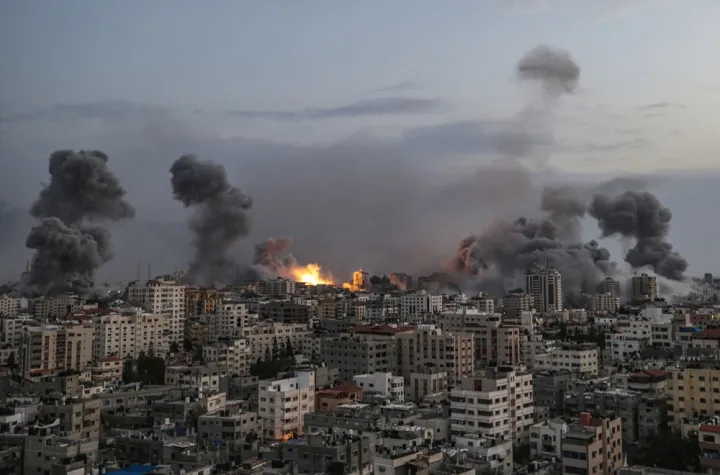
How did Gaza become one of the most densely populated parts on Earth? And why is it the home to militant Palestinian action now? Understanding the answers to those questions provides crucial historical context to the current violence.
The focus on conflict in the Middle East has again returned to the Gaza Strip, with Israel’s defence minister ordering a “complete siege” of the Palestinian enclave.
The military operation, which involves extensive bombing of residences, follows a surprise attack on 7 October 2023, by Hamas militants who infiltrated Israel from Gaza and killed more than 900 Israelis. In reprisal airstrikes, the Israeli military has killed over 800 Gazans. And that figure could escalate in the coming days. Meanwhile, an order to cut off all food, electricity and water to Gaza will only worsen the plight of residents in what has been called the “world’s largest open-air prison”.
But how did Gaza become one of the most densely populated parts of the planet? And why is it the home to militant Palestinian action now? As a scholar of Palestinian history, I believe understanding the answers to those questions provides crucial historical context to the current violence.
Read more in Daily Maverick: Latest: Israel vows to wipe out Hamas as ground war looms
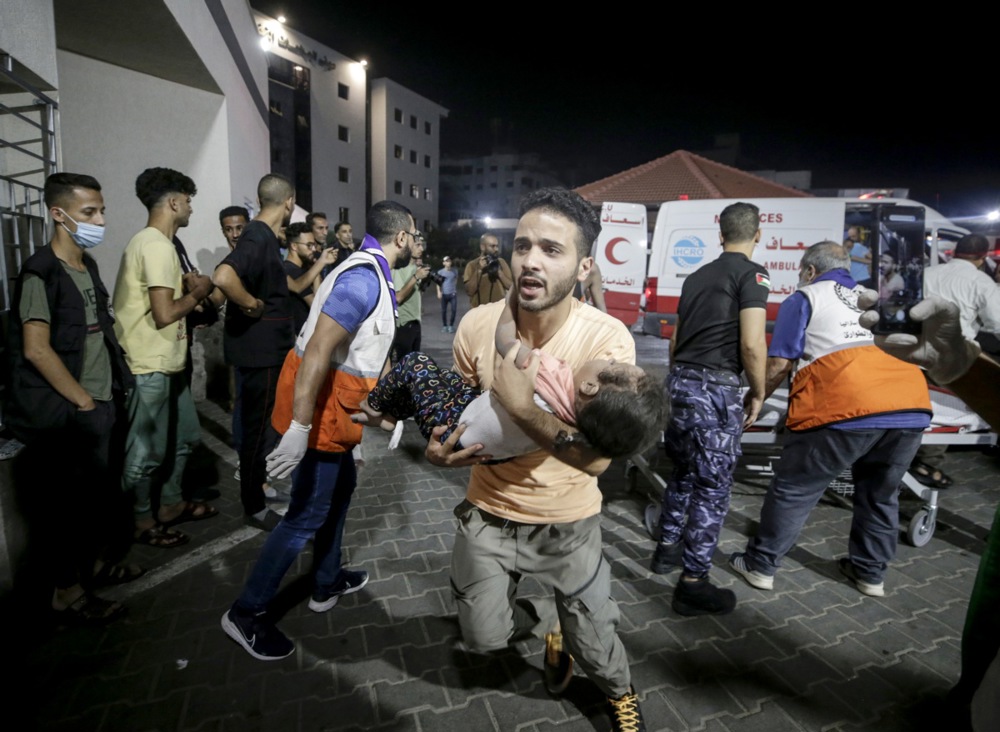
A Palestinian man carries a wounded child at Al-Shifa hospital in Gaza City on 9 October 2023. The Israeli army announced on 09 October, it carried out over 500 strikes on targets across the Gaza Strip overnight. (Photo: EPA-EFE/Haitham Imad)
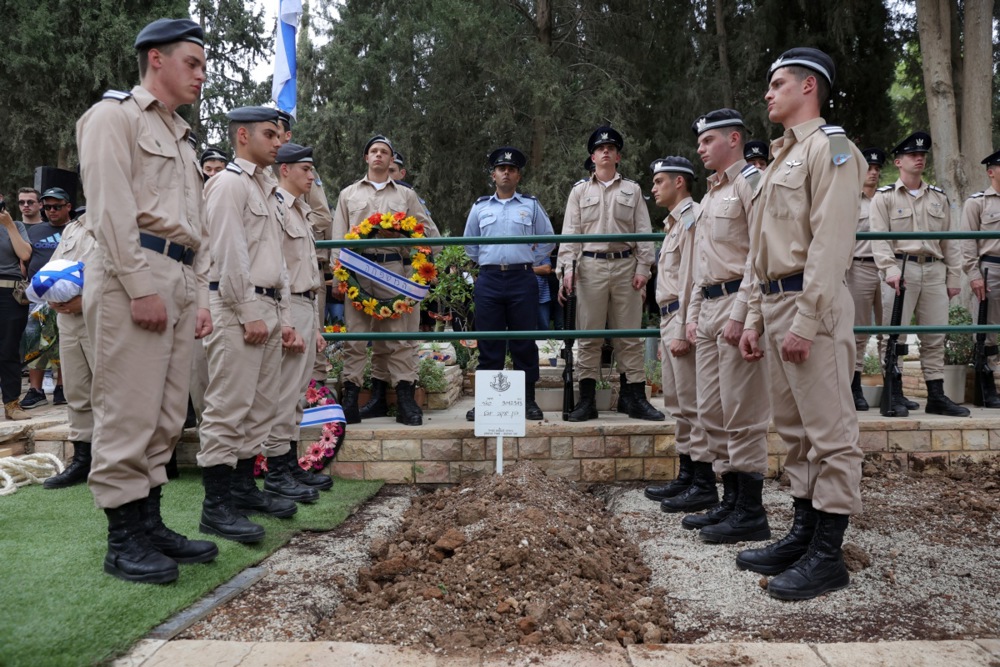
Soldiers stand at the grave of Israeli soldier Yuval Ben Yaakov, who died during fighting with Hamas militants on the border with the Gaza Strip, during his funeral in the kibbutz of Kfar Menahem, southern Israel, on 9 October 2023. (Photo: EPA-EFE/Abir Sultan)
A brief history of Gaza
The Gaza Strip is a narrow piece of land on the southeastern shore of the Mediterranean Sea. Roughly twice the size of Washington, DC, it is wedged between Israel to its north and east and Egypt to its south.
An ancient trade and seaport, Gaza has long been part of the geographic region known as Palestine. By the early 20th century, it was mainly inhabited by Muslim and Christian Arabs who lived under Ottoman rule. When Britain took control of Palestine following World War 1, intellectuals in Gaza joined the emergent Palestinian national movement.
During the 1948 war that established the state of Israel, the Israeli military bombed 29 villages in southern Palestine, leading tens of thousands of villagers to flee to the Gaza Strip, under the control of the Egyptian army that was deployed after Israel declared independence. Most of them and their descendants remain there today.
Following the 1967 Six-Day War between Israel and its Arab neighbours, the Gaza Strip came under Israeli military occupation. The occupation has resulted in “systematic human rights violations”, according to rights group Amnesty International, including forcing people off their land, destroying homes and crushing even nonviolent forms of political dissent.
Palestinians staged two major uprisings, in 1987-1991 and in 2000-2005, hoping to end the occupation and establish an independent Palestinian state.
Hamas, a Palestinian Islamist militant group centred in Gaza, was founded in 1988 to fight against the Israeli occupation. Hamas and other militant groups launched repeated attacks on Israeli targets in Gaza, leading to Israel’s unilateral withdrawal from Gaza in 2005. In 2006, Palestinian legislative elections were held. Hamas beat its secular rival, Fatah, which had been widely accused of corruption. Elections haven’t been held in Gaza since 2006, but polling from March 2023 found that 45% of Gazans would back Hamas should there be a vote, ahead of Fatah at 32%.
After a brief conflict between Hamas and Fatah militants in May 2007, Hamas took complete control of the Gaza Strip. Since then, Gaza has been under the administrative control of Hamas, even though it is still considered to be under Israeli occupation by the United Nations, the US State Department and other international bodies.
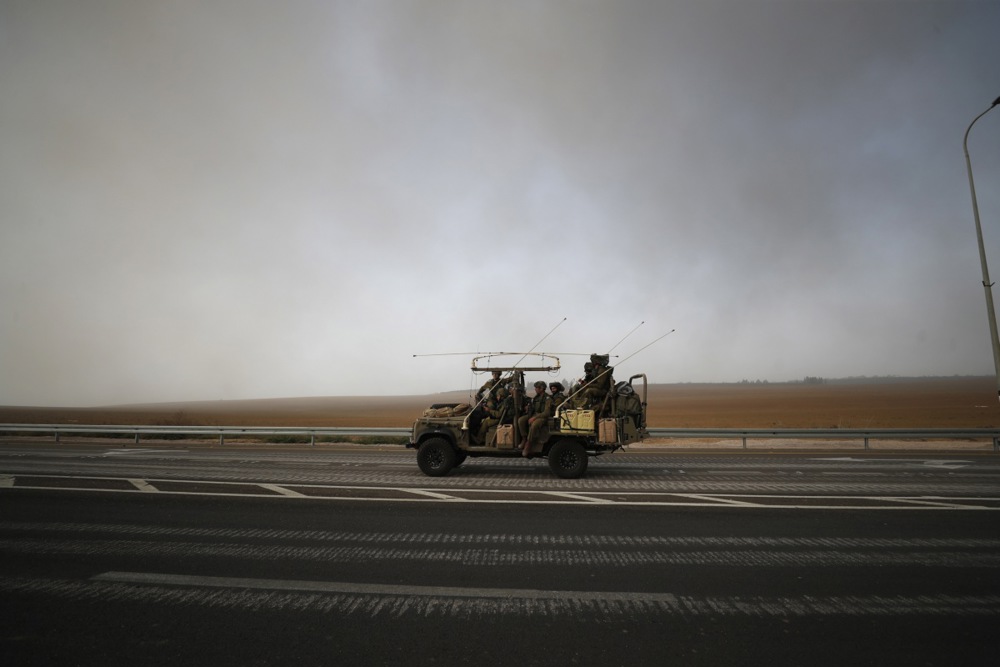
Israeli soldiers patrol on the roads near the border with Gaza, on 8 October 2023. Israel announced initiating a large-scale operation ‘Swords of Iron’ after surprise attacks on Israel on 7 October, claimed by the Islamist movement Hamas killed more than 670 Israelis and left over 2,100 injured in the attacks, the Israeli army said on 8 October. (Photo: EPA-EFE/Atef Safadi)
Who are the Palestinians of Gaza?
The more than two million inhabitants of the Gaza Strip are part of the 14 million-strong global Palestinian community. About one third of Gaza’s inhabitants trace their family’s roots to land inside the Gaza Strip. The remaining two-thirds are refugees from the 1948 war and their descendants, many of whom hail from towns and villages surrounding Gaza.
The Palestinians of Gaza trend young: nearly half the population is under 18. The enclave is also very poor, with a poverty rate that stands at 53%.
Despite this grim economic picture, education levels are quite high. Over 95% of Gazan children ages 6-12 are in school. The majority of Palestinian students in Gaza graduate from high school, and 57% of students at the prestigious Islamic University of Gaza are female.
But because of the circumstances of their surroundings, young Palestinians in Gaza find it difficult to live fulfilling lives. For graduates between the ages of 19 and 29, the unemployment rate stands at 70%. And a World Bank survey earlier this year found 71% of Gazans show signs of depression and high levels of PTSD.
There are several factors that contribute to these conditions. A major factor is the crippling, 16-year blockade that Israel and Egypt — with US support — have imposed on Gaza.
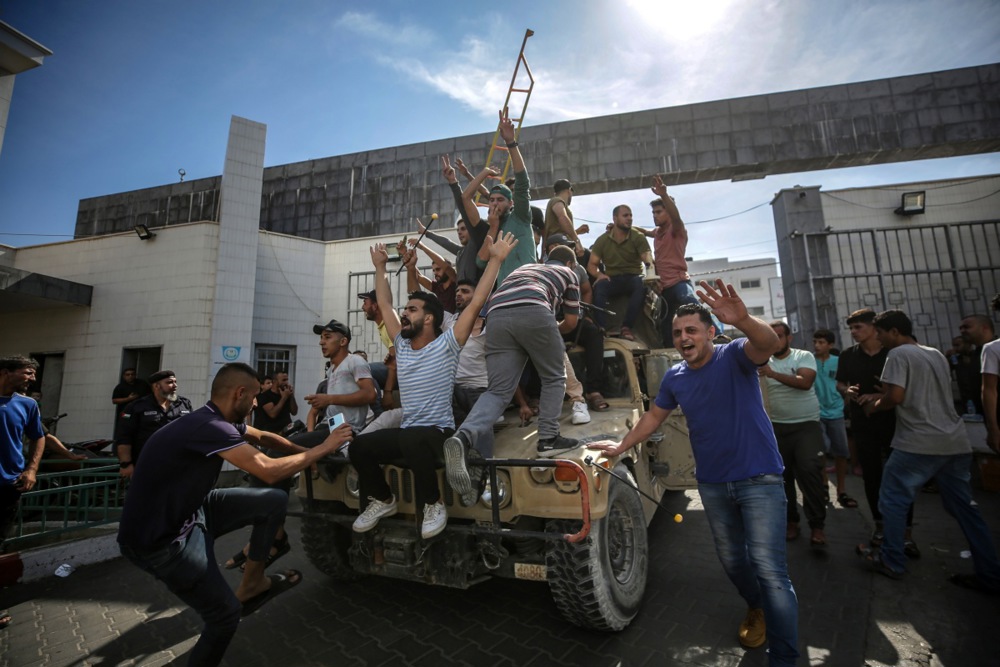
Palestinians ride an Israeli military jeep in the streets of Gaza during the storming of Israeli settlements by militants of the Ezz Al-Din Al Qassam militia, the military wing of Hamas movement, Gaza city, on 7 October 2023. (Photo: EPA-EFE/Haitham Imad)
Years of blockade
Shortly after the 2006 elections, the Bush administration tried to force Hamas from power and bring in a rival leader from the Fatah party who was considered friendlier to Israel and the US. Hamas pre-empted the coup and took full control of Gaza in May 2007. In response, Israel and Egypt — with US and European support — closed the border crossings into and out of the Gaza Strip and imposed a land, air and sea blockade.
The blockade, which is still in effect, limits the import of food, fuel and construction material; limits how far Gaza’s fishermen can go out to sea; bans almost all exports; and imposes strict limitations on the movement of people into and out of Gaza. In 2023, Israel has allowed only around 50,000 people a month to exit Gaza, according to UN figures.
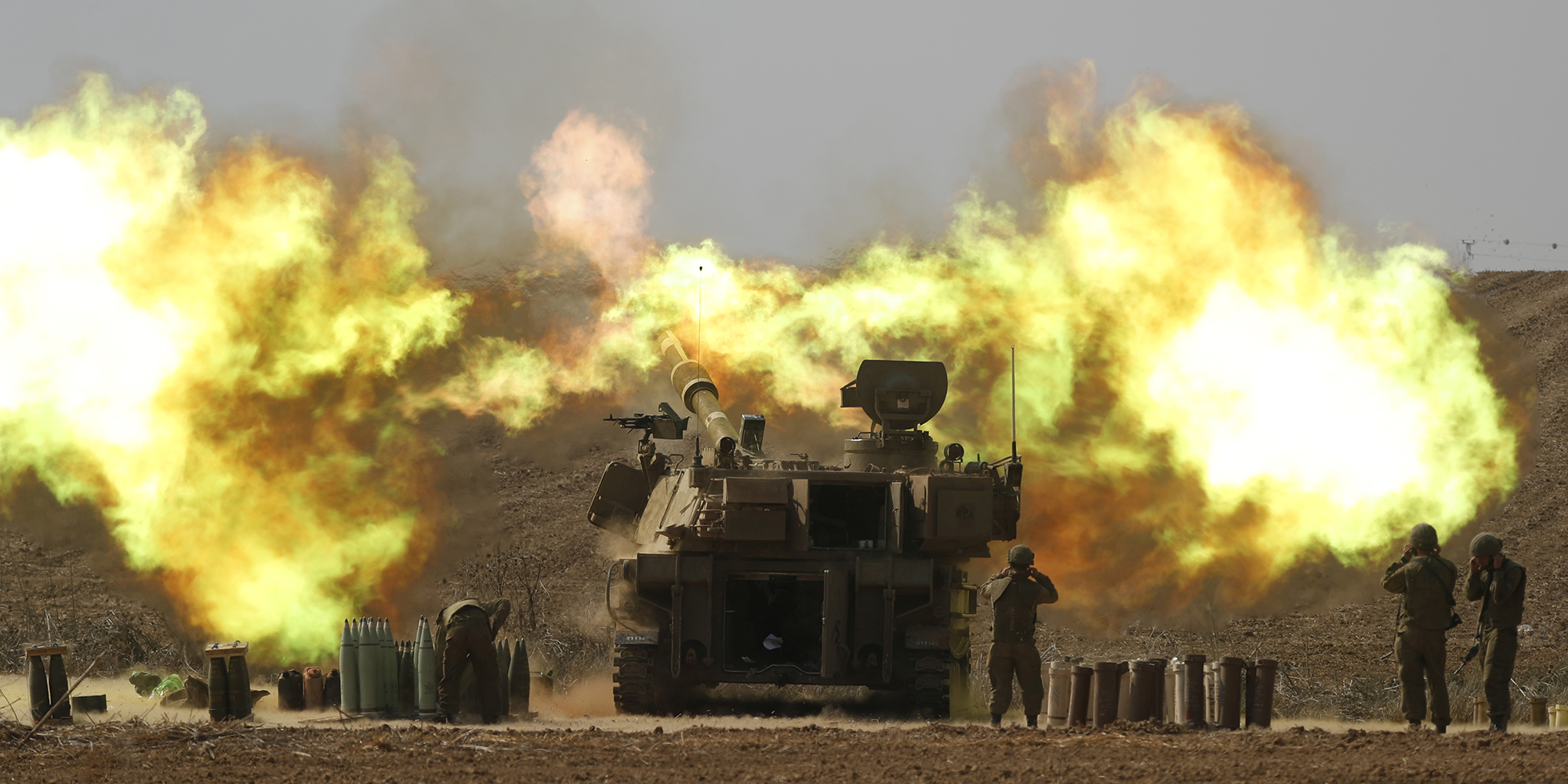
An Israeli artillery unit fires towards Gaza along the border in southern Israel on 11 October 2023. (Photo: EPA / STR)
The years of closure have devastated the lives of Palestinians in Gaza. Inhabitants there don’t have enough water for drinking and sanitation. They face electricity cuts that run 12 to 18 hours each day. Without adequate water and electricity, Gaza’s fragile healthcare system is “on the brink of collapse”, according to the medical rights group Medical Aid for Palestine.
These restrictions hit the young and the weak of Gaza particularly hard. Israel routinely denies sick patients the permits they need to receive medical care outside of Gaza. Bright students with scholarships to study abroad often find that they are unable to leave.
UN experts say this blockade is illegal under international law. They argue that the blockade amounts to a collective punishment of the Palestinians of Gaza, a violation of the Hague Convention and the Geneva Conventions that form the backbone of international law.
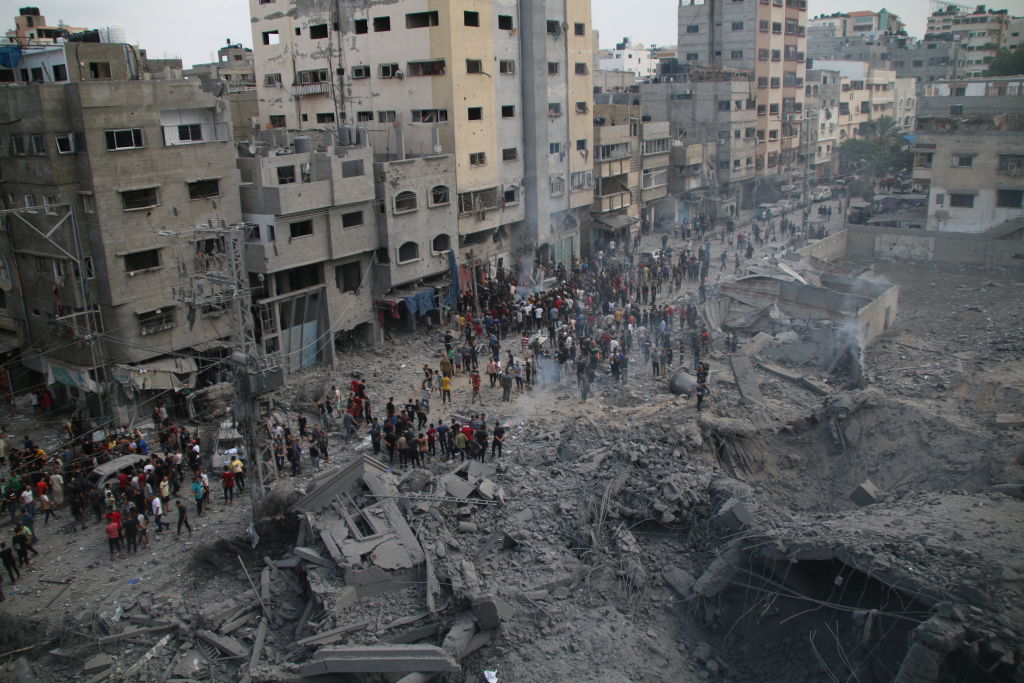
Palestinian citizens inspect the damage to the Al-Sussi Mosque and their homes following Israeli air strikes in the Al-Shati Palestinian refugee camp on 9 October, 2023 in Gaza City, Gaza. Almost 500 people have died in Gaza after Israel launched sustained retaliatory air strikes after Saturday’s attack by Hamas. (Photo: Ahmad Hasaballah/Getty Images)
No end to the suffering
Israel says that the blockade on Gaza is necessary to secure the safety of its population and will be lifted when Hamas renounces violence, recognises Israel and abides by previous agreements.
But Hamas has consistently rejected this ultimatum. Instead, militant fighters stepped up the firing of homemade rockets and mortars into populated areas surrounding the Gaza Strip in 2008, seeking to pressure Israel to lift the blockade. They have sporadically attacked Israel in this way in the years since.
Israel has launched four major military assaults on Gaza — in 2008-09, 2012, 2014 and 2021 — in efforts to destroy Hamas’ military capabilities. Those wars killed 4,000 Palestinians, more than half of whom were civilians, along with 106 people in Israel.
During that time, the UN estimates that there has been more than $5-billion worth of damage to Gaza’s homes, agriculture, industry, electricity and water infrastructure.
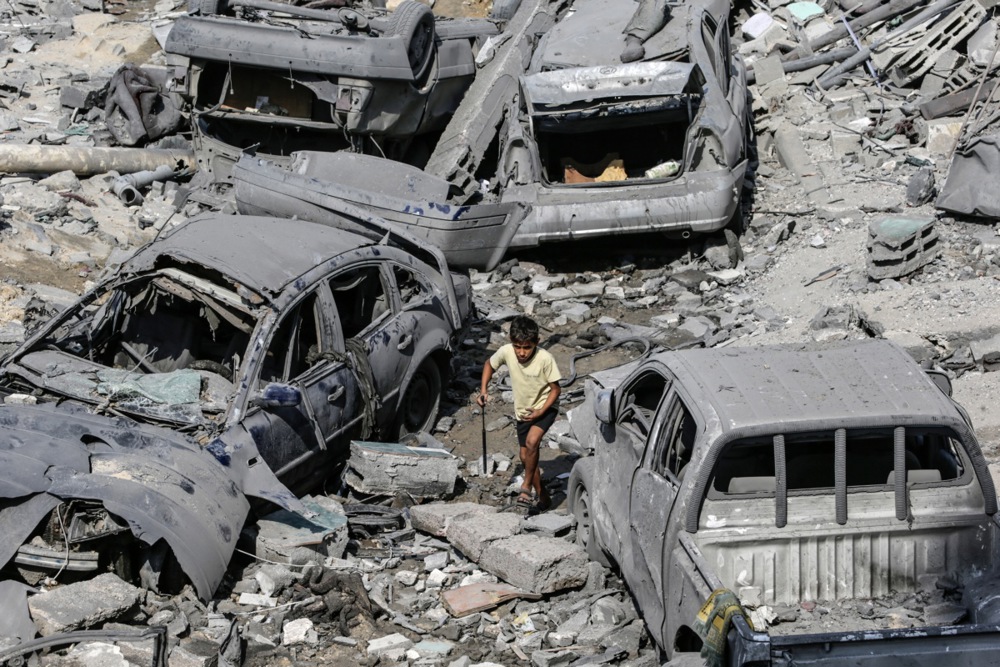
A Palestinian child walks past damaged cars amid the rubble of a destroyed area after Israeli air strikes in Gaza City, on 9 October 2023. The Israeli army announced on 09 October, it carried out over 500 strikes on targets across the Gaza Strip overnight. (Photo: EPA-EFE/Mohsmmed Saber)
Each of those wars ended in a fragile ceasefire but no real resolution to the conflict. Israel seeks to deter Hamas from launching rockets. Hamas and other militant groups say that even when they have upheld previous ceasefires, Israel has continued to attack Palestinians and has refused to lift the blockade.
Hamas has offered a long-term truce in exchange for Israel ending the blockade on Gaza. Israel has refused to accept the offer, sticking to its position that Hamas must first end violence and recognise Israel.
In the months leading up to the latest escalation, conditions in Gaza have deteriorated even further. The International Monetary Fund reported in September that Gaza’s economic outlook “remains dire”. Conditions became more dire when Israel announced on 5 September 2023 that it was halting all exports from a key Gaza border crossing.
Without an end in sight to the suffering caused by the blockade, it appears that Hamas has decided to upend the status quo in a surprise attack on Israelis, including civilians. Israel’s reprisal airstrikes and its imposition of a “complete siege” on the strip have heaped even further suffering on ordinary Gazans.
It is a tragic reminder that civilians bear the brunt of this conflict. DM
Maha Nassar is Associate Professor in the School of Middle Eastern and North African Studies, University of Arizona.
First published in The Conversation.


















Thank you for this much needed piece. Much of the narrative around the war ignores the crucially important historical context.
DM should be embarrassed to publish such an obviously one sided article. How many tens of thousands of rockets have been fired at Israeli civilians? How many Gazan Christians have been murdered by Hamas? How many Fatah members were wiped out in Hamas’ bid to make it a one party state? How often has Hamas promised to kill every Israeli?
This is very poor, especially from someone with academic pretensions.
Its history with bias. Its a version of the history that the author chose to suit their personal view of the conflict. It doesn’t mean its wrong. Its just incomplete and the bias is clear
There is too much left out of this and it comes across as quite one-sided… There is blame to lay at the feet of both sides. Personal feelings shouldn’t impact the history you tell for a site such as this
Conditions far worse than for Black SA during Apartheid – would breed nothing else but killing machines. It is impossible to take seriously the US’s and EU’s support for Ukraine on democracy, freedom and respect for international law, while supporting Israel’s denial of palestinians the same. Such hypocracy. Putin must be feeling so vindicated by all of this kak.
Very true
The article is not quite correct: Hamas actually was founded in the seventies – with the explicit support of Israel. Which was, at that time, looking to prop up an ‘opposition’ to Arafat’s PLO.
Its origins really lie with Egypt’s Nasser and his prohibition of the Muslim Brotherhood. And the execution 1966 of its leader, Sayed Qut’b.
Israel, however, allowed the Brotherhood (al-Ikhwan) to operate in Gaza (which it had conquered from Egypt in 1967). There, wheelchair bound Sheikh Yassin founded Mujama al Islamia – a charity organisation, which was recognised as such by Israel in 1979. Sheikh Yassin went on to found the Islamic University of Gaza, was imprisoned by Israel – and again released. With Oslo came Israel’s formal recognition of the PLO – but what had become “Hamas” in the Strip refused to recognise Israel’s right to exist – and embarked on ‘terrorist’ attacks. Which became more and more virulent – until Sharon’s accession to the Temple Mount with soldiers in boots in 2002 ignited the Second Intifada. Sheikh Yassin was assassinated by Israel in 2004.
In 2008 Hamas (under Khaled Meshaal) offered Israel a 10-year “hyena” (truce) if it would retreat to the borders of 1967 – but he refused to formally recognise Israel (this in spite of the fact that Mossad (instructed by Netanyahu!) had attempted to assassinate Meshaal in Amman – on September 25th 1997).
Google: vantage-how-israel-helped-create-hamas-that-its-fighting-today
What a cycle. Sounds like the US’s support of the Taliban.
I suppose it’s par for the course for colonial forces to try, by deception, to manipulate the politics in a country for their own ends.
“hyena” – not hyena 🙂
HUDNA – not hyena!
A Hudna in this context is merely an opportunity for Hamas to rearm to begin again.
Their stated commitment is for the extermination of all Jews no more no less.
Believe them when they have this stated in their written constitution, in their multiple clips for all to see on You Tube and other media and in their savage murder, of babies, kids, young families, elders in the most indescribable of ways including gang rapes of girls and kids and then followed by murder, burning alive, beheading. Israel is thus at war with Gaza and will not give an inch until Hamas are eliminated and all hostages returned. One doesn’t give succour to your enemies. Hamas has had enough time and resources to build infrastructure instead of war tunnels and rockets and lots of theft (Hi ANC, their kindred spirits)
If Hamas want to put their rocket launchers in kitchens then it is on them with their cynical attempts to garner media sympathy – the residents of Gaza would be best off with Hamas gone and consigned to the dustbin of history. This cannot come soon enough and their shills on the street celebrating the deaths of Jews and/or governments supporting this (Hi Cyril) will not emerge well. Enough is enough
Sad story of mutual intolerance and what happens when religious extremists on both sides call the shots. In all this, where are the Muslim neighbors in taking in these desperate people?
For someone claiming they are providing “historical context” this is extremely biased – in every respect: choice of language, omission of facts, even choice of pictures. Although it’s littered with bias, a critical example from the beginning suffices to illustrate:
“During the 1948 war which established Israel …”: actually, it was United Nations Resolution 181 which partitioned Palestine into two states, one for Jews and the remainder for Arabs, which effectively established Israel. The day after the UN formally adopted this resolution Israel announced its acceptance and its status as an independent state. The following day Israel was attacked by Egypt, Iraq, Jordan, Lebanon and Syria – from all sides on the same day and with the stated intention of destroying Israel. But Israel won the war AND more territory which it then retained – rightly or wrongly – as a buffer from further Arab attacks. (Just look at a map of the area to get some perspective on why they might think this important).
The rest of the article continues in similar biased fashion.
What a pity – it would be nice to get an article that is genuinely objective and gives the complete picture where both sides have justified grievances and justified concerns.
This piece is misleading by its omission of facts. Yet another version of history that encourages hatred.
The Gaza Strip is frequently referred to as one of the most densely populated areas in the world. According to the CIA, it has a population of 2,098,389 in an area of 139 square miles (slightly more than twice the size of Washington, D.C.), which would be a density of 15,096 people per square mile, which is less than the density of the city of Tel Aviv (21,793/sq. mi.). If you compare Gaza to a country, then it would rank fifth but is not even close to the top two – Macau (56,247) and Monaco (51,167).
Gaza City is the 63rd most densely populated urban area in the world at 42,059 per square mile. This is far below Bnei Brak in Israel (76,000 per square mile). A more apt comparison is Manhattan, which is 23 square miles compared to Gaza City’s 17. Its population density is more than 70,000 per square mile.
Maha Nassar, if you want to tell a story critical to understanding the conflict, you need to tell the whole story. In telling half the story, you only propagate more confusion, resentment, indoctrination, hatred, polarization and offer zero solution except the only apparent one that would be acceptable, that is the complete obliteration of the state of Israel. This clearly makes you part of the problem.
The biased anti semetic undertones of this article horrifying . Let me be clear the unprovoked murder, rape and kidnapping of over 1000 innocent children women and men needs no “context”. This is not a political war it is a war against a violent malicious terrorist organization, Hamas, that openly calls for the death of all Jews. How does beheading children “free Palestine”? How does murdering a holocaust survivor bring any peace to the Palestinian people? It does not.
Israel has supplied Gaza with food, water, fuel and medical supplies since the disengagement in 2005 and this is how Hamas reacts?!
Israel like any other country has a right to defend herself and when a terrorist organization carries out one of the biggest attacks in history, yes Israel will respond. Yes Israel will fight back and Yes Israel will win.
I don’t claim to be knowledgeable on Israel, Palestine, Gaza or even politics, but I find it sad that politics divide normal people and turn them into extremists. The further right-wing the Israeli government became under Netanyahu, the further left-wing Hamas became… And the more they hurt each other, the bigger the hatred grows. Did we not experience the same in SA? And after 1994, we found that some of the revolutionaries on the other side were actually nice guys, and they hopefully discovered the same about us. This conflict will only stop if the parties start talking with each other. Let’s pray for peace in the Middle East!
I am so glad that more people have signed up as Maverick insiders but the comments suggest they hate the independent journalism they initially signed up to support